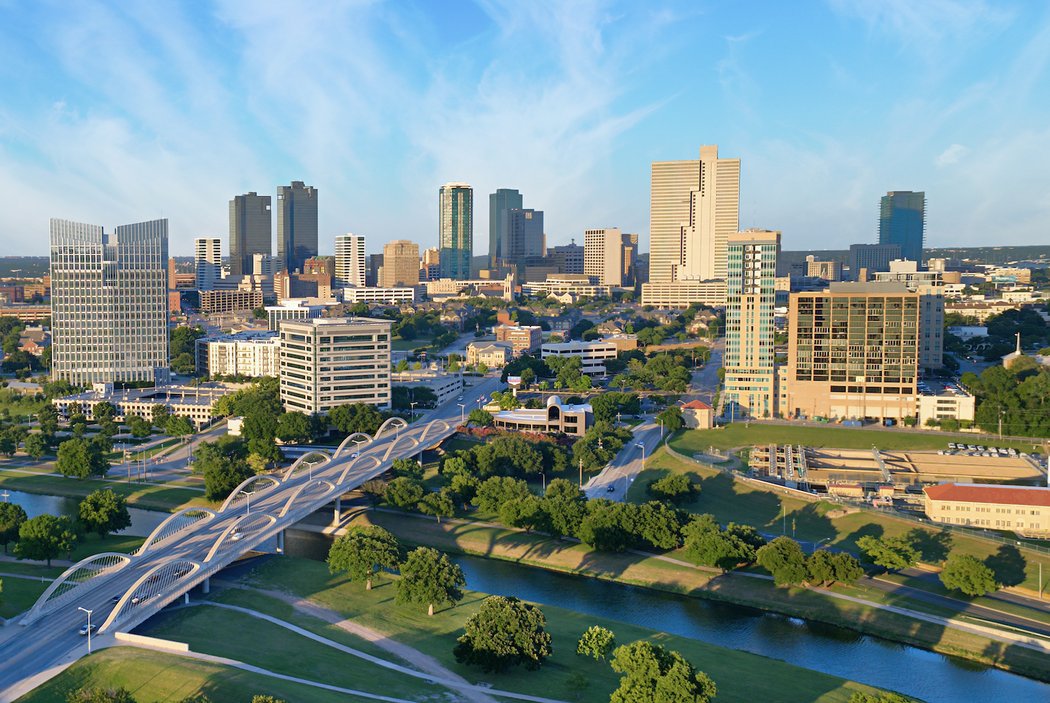Another survey has taken note of Fort Worth’s rise as a U.S. economic power center.
Fort Worth placed fifth among America’s largest cities in a new analysis of economic momentum by coworkingcafe.com, earning 59 points and distinguishing itself with the biggest jump in educational attainment (plus-9%) and a sharp rise in exports (plus-40%).
The city also posted steady advances across other fundamentals — GDP (plus-36%), housing (plus-12%) and employment — underscoring a broad-based expansion.
Local higher-ed growth is part of the story. Texas A&M is building a research and innovation hub downtown that builds human capital and align with employers’ needs.
TCU and Texas Wesleyan are also expanding offerings in workforce development. The momentum has lured UT Arlington to west Fort Worth. Construction on UTA West is underway.
“Workforce is the new currency of economic development,” said Steven Pedigo, professor of practice and director of the LBJ Urban Lab at the University of Texas. “Cities that are serious about long-term growth are investing in talent — not just attracting it, but cultivating it through aligned education, training and upskilling strategies,”
America’s growth map is being redrawn. Business activity, rising incomes, new infrastructure, and population gains are lifting cities across the country, and it’s not just the usual suspects. Innovation, tech, shifting labor markets, and global trade realignments are moving the bull’s-eye.
Coworkingcafe examined numbers on GDP, jobs, housing, exports, and infrastructure from 2019-23 to identify the cities making trends. The firm grouped standouts by size—small (under 250k), mid (250k–500k), and large (500k-plus).
The ranking assessed Fort Worth’s status among large cities across a mix of productivity, employment, and investment indicators. Fort Worth’s combination of workforce development and trade expansion placed it alongside some of the nation’s fastest-rising markets.
Austin topped the list with 61 points on the strength of a 51% surge in GDP, rapid job creation in tech, manufacturing and professional services, a 12% increase in housing stock, and a 4% rise in educational attainment. Median earnings climbed 33% and new business applications jumped 71%, helping push the region’s GDP above $248 billion in 2023. Major projects like the voter-approved Project Connect transit overhaul signal long-term infrastructure investment, even as big-tech hiring and housing demand show signs of cooling.
Sacramento finished second, fueled by a 166% spike in new business applications, a 32% gain in median earnings (from $35,954 to $47,441), and 20% employment growth in both construction and manufacturing. Local initiatives — from the Business Solutions Center’s microgrants and fee relief to the SizeUp Sacramento analytics platform — are arming small firms with actionable data.
Jacksonville ranked third on the back of a 9% population increase (about 14,000 new residents between mid-2022 and mid-2023), 43% GDP growth, 10% housing development, and 25% export gains. Heavy investment in airports, roads and drainage, along with downtown riverfront office projects, reflects corporate confidence; logistics anchor JAXPORT contributes more than $31 billion annually and supports 138,500 jobs.
Phoenix (grouped with Mesa) took fourth with 59 points, leading the infrastructure category on a 26% increase in total roadway miles and showing 42% GDP growth and a 12% boost in median earnings. A $29.5 million land purchase in the Rio Salado corridor — part of the Rio Reimagined plan — highlights its long-range development focus.
